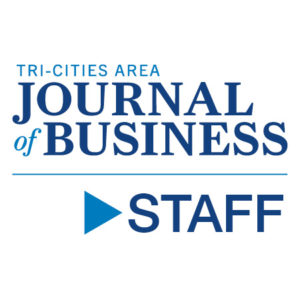
Home » Construction underway on new $7.7M science exploration center
Construction underway on new $7.7M science exploration center

December 14, 2020
A $7.7 million science exploration center under construction in Richland aims to foster science-inspired students and STEM-confident educators.
LIGO Hanford, one of two detectors making up the Laser Interferometer Gravitational-wave Observatory, broke ground this fall on the LIGO Exploration Center, called LExC.
Expected to host up to 10,000 students each year, in addition to other public visitors, it will feature 50 interactive exhibits, including a giant funnel to demonstrate the principles of gravity.
LExC also will showcase LIGO’s gold-plated 2017 Nobel Prize in Physics.
Three key members of LIGO were awarded the 2017 Nobel Prize in Physics for their contributions to the observatory’s historic 2015 detection of gravitational waves, or ripples in space and time; each winner receives additional medals to share with institutions to display.
“We are thrilled to launch the construction of the LIGO Exploration Center,” said LIGO Hanford Observatory Head Michael Landry in a press release. “This brings us one giant step closer to the grand opening of the center, which will serve Eastern Washington and beyond with innovative and experiential STEM content.”
The coronavirus pandemic forced the LIGO team to put together a virtual groundbreaking video to commemorate the event: bit.ly/LIGOHanford.
The new center, designed by Pasco-based Terence L. Thornhill architects and to be built by DGR Grant Construction of Richland, is scheduled to open in January 2022.
“It is sort of the epitome of the Tri-Cities – science, technology, engineering and math – but in a way that brings students in, gets them learning hands on, gets them engaged,” said Chris Reykdal, Washington state superintendent of public instruction, in the LIGO video. His office awarded the grant to pay for the project.
LExC will support science, technology, engineering and math education in the region by providing opportunities for teachers, students, and families, said Amber Strunk, education and public outreach lead at LIGO Hanford Observatory.
“Previously, we had been hosting 3,000 to 4,000 K-12 students a year, in addition to bringing our scientists into classroom, but with the growing interest in LIGO and its ongoing discoveries, we wanted to reach and inspire even more students of all ages.”
“With this new STEM exploration center, LIGO will help this country produce inspired students and STEM-capable teachers,” said Denise Caldwell, division director for physics at the National Science Foundation, in the video.
Landry and the staff at LIGO Hanford Observatory are employed by Caltech, which manages the observatories together with MIT.
Real Estate & Construction
KEYWORDS december 2020





